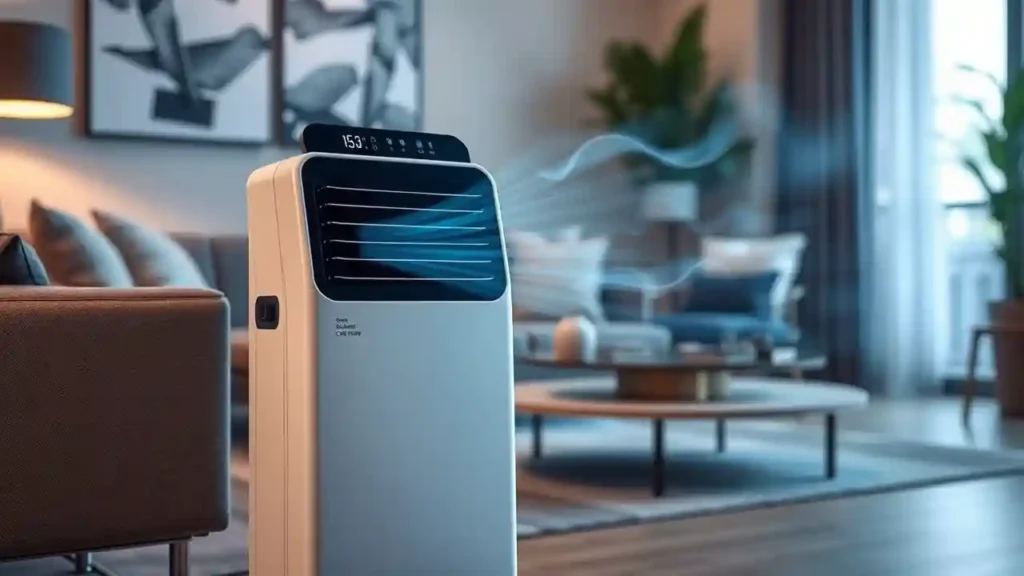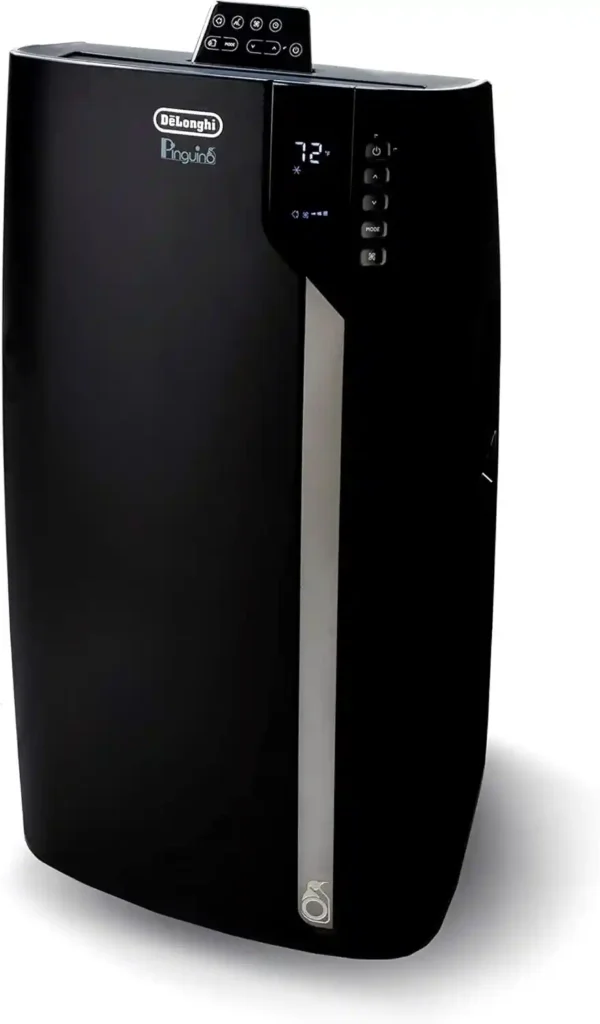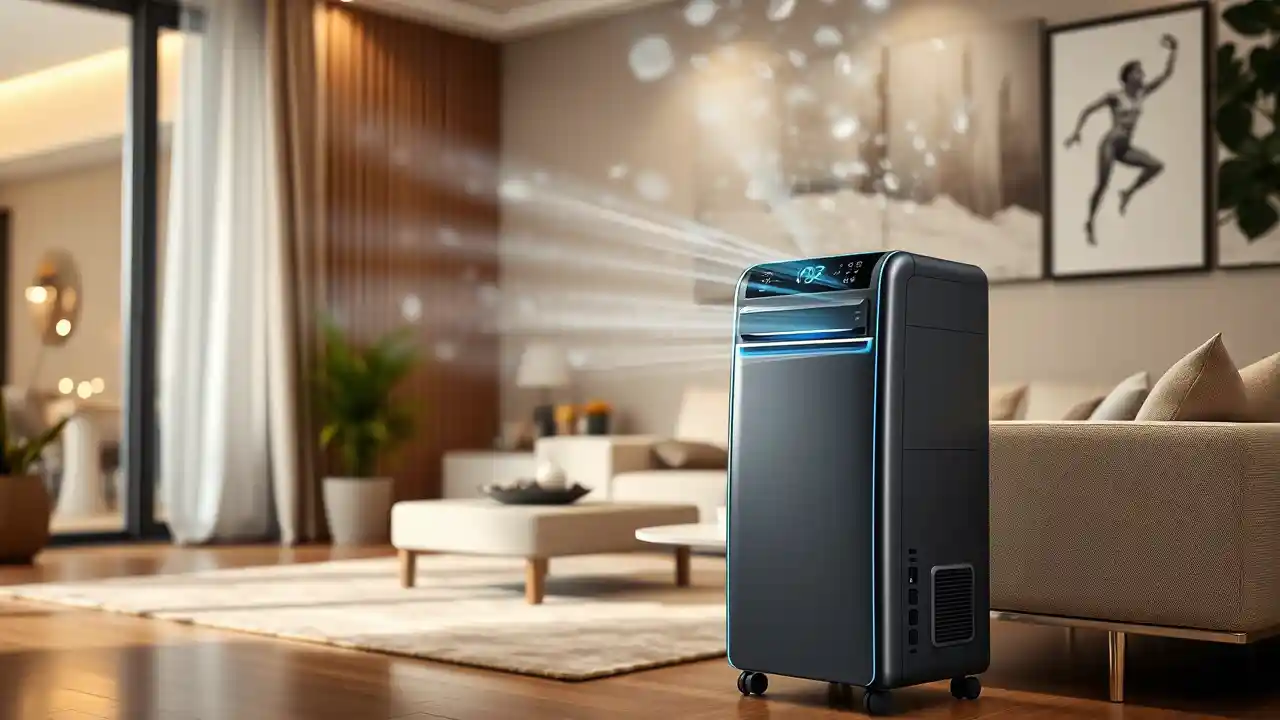In the sweltering heat of summer, finding the perfect cooling solution can feel like chasing a mirage. Yet, among the sea of air conditioning options, self-evaporating air conditioners emerge as a beacon of innovation—combining efficiency with convenience in a way that traditional units simply can’t match.
Whether you’re tired of emptying water buckets or seeking a more energy-efficient cooling solution, this comprehensive guide will help you navigate the world of self-evaporating air conditioners with confidence.
Contents
- Introduction to Self Evaporating Air Conditioners
- How Do Self Evaporating Air Conditioners Work?
- Types of Self Evaporating Air Conditioners
- Key Features to Look for in a Self Evaporating Air Conditioner
- Advantages of Self Evaporating Air Conditioners
- Limitations of Self Evaporating Air Conditioners
- Top Brands and Models
- How to Choose the Right Self Evaporating Air Conditioner
- Frequently Asked Questions
- Conclusion
Introduction to Self Evaporating Air Conditioners
Picture this: a portable air conditioner that handles its own condensation, freeing you from the mundane task of regular water drainage. That’s exactly what a self-evaporating air conditioner delivers. These ingenious devices represent a significant leap forward in cooling technology, offering a solution that’s as practical as it is efficient.
Unlike their traditional counterparts, which require constant attention to condensation management, self-evaporating units automatically recycle moisture from the air conditioning process. This revolutionary approach not only simplifies maintenance but also contributes to enhanced energy efficiency—a win-win for both your comfort and your utility bills.
The benefits of self-evaporating technology extend far beyond mere convenience. These systems offer:
- Streamlined operation with minimal maintenance requirements
- Enhanced energy efficiency through moisture recycling
- Reduced environmental impact compared to traditional portable units
- Greater flexibility in placement without drainage constraints
How Do Self Evaporating Air Conditioners Work?
The magic behind self-evaporating air conditioners lies in their innovative approach to handling condensation. While traditional portable air conditioners collect water in a tank or drain it through a hose, self-evaporating systems transform this potential nuisance into an advantage.

The Self-Evaporating Process
When warm room air meets the cold evaporator coils, condensation naturally occurs—it’s simple physics at work. But here’s where things get interesting: instead of collecting this condensation, self-evaporating systems redirect it to the condenser coils. The heat generated during the cooling process then evaporates this moisture, expelling it through the exhaust hose along with warm air.
Key components working in harmony include:
The Evaporator: This component cools incoming air while extracting moisture. Think of it as the first stage in a sophisticated moisture management system.
The Condenser: Acting as both heat exchanger and moisture eliminator, the condenser plays a crucial role in the self-evaporating process. It’s here that collected moisture meets its fate, transforming from liquid to vapor.
The Fan System: Multiple fans work in concert to move air through the unit, ensuring efficient cooling and moisture elimination. This orchestrated airflow is essential for maintaining optimal performance.
Effectiveness in Real-World Conditions
Do self-evaporating air conditioners work effectively? The answer lies in understanding their design parameters. In moderate humidity conditions, these systems can handle all condensation produced during operation. However, during periods of extreme humidity, some units may require occasional manual drainage—though far less frequently than traditional portable air conditioners.
Types of Self Evaporating Air Conditioners
The market offers several variations of self-evaporating technology, each designed to meet specific cooling needs. Let’s explore the main categories:
Portable Self-Evaporating Units
These versatile units offer the perfect blend of mobility and efficiency. Equipped with wheels and handles, they can be moved from room to room as needed. Modern portable units often feature:
- Multiple fan speeds for customized cooling
- Programmable timers for automated operation
- Remote control functionality for convenient adjustment
- Built-in air filtration systems
Self-Evaporating Heat Pump Models
Brands like Delonghi have pioneered self-evaporating heat pump systems that offer both cooling and heating capabilities. These sophisticated units provide year-round climate control, making them an excellent investment for varying seasonal needs.

Fixed Installation Units
While less common, some manufacturers offer self-evaporating systems designed for permanent installation. These units typically offer higher cooling capacity and enhanced energy efficiency compared to portable models.
Key Features to Look for in a Self Evaporating Air Conditioner
Choosing the right self-evaporating air conditioner requires careful consideration of several crucial factors:
BTU Capacity and Room Size Compatibility
The relationship between BTU (British Thermal Units) and room size is critical for effective cooling. Here’s a quick reference guide:
- 5,000-6,000 BTU: Suitable for rooms up to 250 sq ft
- 7,000-8,200 BTU: Ideal for spaces between 250-350 sq ft
- 9,000-10,000 BTU: Perfect for rooms up to 450 sq ft
- 12,000-14,000 BTU: Capable of cooling spaces up to 700 sq ft
Remember: Factors like ceiling height, sun exposure, and local climate can affect these guidelines.
Energy Efficiency Considerations
Modern self-evaporating units often come with impressive energy efficiency ratings. Look for:
- Energy Star certification
- EER (Energy Efficiency Ratio) ratings above 10
- Smart features that optimize power consumption
- Programmable operations to reduce unnecessary runtime
Installation and Portability Features
Even the most efficient unit won’t serve you well if it’s cumbersome to install or move. Consider:
- Weight and dimensions
- Wheel quality and maneuverability
- Window kit compatibility
- Power cord length and outlet requirements
Advantages of Self Evaporating Air Conditioners
The benefits of choosing a self-evaporating system extend far beyond basic cooling:
Maintenance Freedom
Gone are the days of constantly emptying water collection tanks or managing drain hoses. Self-evaporating technology handles moisture automatically, dramatically reducing maintenance requirements and improving convenience.
Energy Efficiency
By recycling condensation into the cooling process, these units often achieve better energy efficiency than traditional portable air conditioners. This translates to lower operating costs and reduced environmental impact.
Versatile Installation Options
Without the need for permanent drainage solutions, self-evaporating units offer greater flexibility in placement. This makes them ideal for apartments, offices, and other spaces where traditional installation might be challenging.
Limitations of Self Evaporating Air Conditioners
While self-evaporating air conditioners offer numerous advantages, it’s important to understand their limitations:
Performance in High-Humidity Environments
In regions with consistently high humidity levels, the self-evaporating system may struggle to process all condensation automatically. Users might occasionally need to:
- Empty backup water collection tanks
- Monitor humidity levels
- Consider supplemental dehumidification
Cooling Capacity Constraints
Most self-evaporating portable units are designed for small to medium-sized spaces. Attempting to cool larger areas may result in:
- Reduced cooling efficiency
- Increased energy consumption
- Excessive wear on the system
Top Brands and Models
The self-evaporating portable AC market features several standout manufacturers:
Delonghi: Innovation Leaders
Delonghi has established itself as a pioneer in self-evaporating technology, offering models that combine:
- Advanced moisture management systems
- Multiple operating modes
- Sophisticated control interfaces
- Reliable performance records
Other Notable Manufacturers
Several other brands have developed impressive self-evaporating options:
- Whynter: Known for energy-efficient designs
- Honeywell: Offers user-friendly features
- Black+Decker: Provides reliable budget options
How to Choose the Right Self Evaporating Air Conditioner
Making the right choice requires careful consideration of several factors:
Space Assessment
Begin by accurately measuring your space and considering:
- Room dimensions
- Ceiling height
- Window placement
- Sun exposure
- Insulation quality
Feature Evaluation
Create a priority list of desired features:
- Noise levels
- Control options
- Energy efficiency ratings
- Additional functions (heating, dehumidifying)
Budget Considerations
While initial cost is important, consider the total cost of ownership:
- Purchase price
- Installation requirements
- Operating costs
- Maintenance expenses
- Expected lifespan
Frequently Asked Questions
Do self-evaporating air conditioners work in high humidity?
Yes, but with some caveats. In extremely humid conditions, these units may require occasional manual drainage, though far less frequently than traditional portable air conditioners.
How does a self-evaporating air conditioner compare to a window AC?
Self-evaporating portable units offer greater flexibility in placement and typically require less permanent installation. However, window units often provide more efficient cooling for their BTU rating.
Can a self-evaporating portable AC cool multiple rooms?
While possible, effectiveness depends on room layout and size. These units work best when cooling a single, enclosed space.
What is the typical lifespan of a self-evaporating air conditioner?
With proper maintenance, expect 8-10 years of reliable service. Factors affecting longevity include:
- Usage patterns
- Maintenance regularity
- Environmental conditions
- Manufacturing quality
Conclusion
Self-evaporating air conditioners represent a significant advancement in portable cooling technology. By combining efficient operation with reduced maintenance requirements, they offer an attractive solution for modern cooling needs.
When selecting a unit, carefully consider your specific requirements:
- Room size and cooling needs
- Local climate conditions
- Installation constraints
- Budget limitations
Remember that while these units offer numerous advantages, they’re not without limitations. Understanding both their capabilities and constraints will help ensure you choose the right model for your needs.
For those seeking an efficient, low-maintenance cooling solution, self-evaporating air conditioners provide an excellent option. Their combination of convenience, efficiency, and technological innovation makes them a worthy consideration for anyone in the market for a new air conditioning system.


